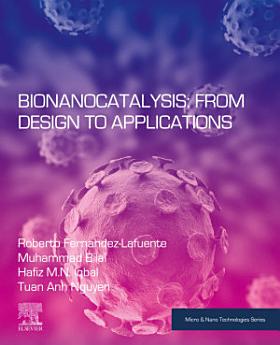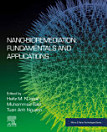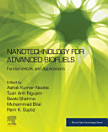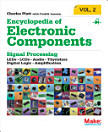Bionanocatalysis: From Design to Applications
關於這本電子書
關於作者
Professor Roberto Fernandez-Lafuente is Research professor at the Institute of Catalysis and Petrochemistry,Madrid, Spain. Hi areas of research are the esign of biocatalysts and biosensors, biomacromolecules immobilization, enzyme stabilization, protein purification, and bioprocess design.
Muhammad Bilal is working as an Associate Professor at the Faculty of Civil and Environmental Engineering, Gdansk University of Technology, Poland. Previously, he served as an assistant/associate Professor at Poznan University of Technology, Poland, and the School of Life Science and Food Engineering, Huaiyin Institute of Technology, Huaian, China. He earned his Ph.D. from Shanghai Jiao Tong University, specializing in bioengineering and applied biotechnology. His main research activities are oriented to Environmental biotechnology, nanotechnology, enzyme engineering, immobilization, chemical modifications, and industrial applications of microbial enzymes, liquid, and solid waste management. He has authored over 700 peer-reviewed articles, 150 book chapters, 25 edited books. Dr. Bilal is the associate editor of Frontiers in Chemical Engineering and Frontiers in Environmental Science (Frontiers), and an editorial board member for several journals. He was listed as a highly cited researcher (Clarivate) in 2021 and holds several "highly cited papers" in WOS.
Dr. Hafiz M.N. Iqbal is a Professor at the School of Engineering and Sciences, Tecnologico de Monterrey, Mexico. He completed his Ph.D. in Biomedical Sciences with a specialization in Applied Biotechnology and Materials Science at the University of Westminster, London, UK. Dr. Iqbal’s research group is engaged in Environmental Engineering, Bioengineering, Biomedical Engineering, Materials Science, Enzyme Engineering, Bio-catalysis, Bioremediation, Algal Biotechnology, and Applied Biotechnology related research activities. With more than 11,400 citations, Dr. Iqbal has guest-edited several special issues and served as an Editorial Board member for several peer-reviewed journals. Dr. Iqbal has published more than 400 scientific contributions in the form of research, reviews, book chapters, and editorials, at several platforms in various journals of national/international repute with high impact factors.
Tuan Anh Nguyen is Senior Principal Research Scientist at the Institute for Tropical Technology, Vietnam Academy of Science and Technology, Vietnam. He received B.S. in Physics from Hanoi University in 1992, and Ph.D. in Chemistry from the Paris Diderot University (France) in 2003. He was Visiting Scientist at Seoul National University (South Korea, 2004) and University of Wollongong (Australia, 2005). He then worked as Postdoctoral Research Associate and Research Scientist in the Montana State University (USA), 2006-2009. In 2012, he was appointed as the Head of the Microanalysis Department at Institute for Tropical Technology. His research activities include smart sensors, smart networks, smart hospitals, smart cities and digital twins. He edited over 70 Elsevier, 12 CRC Press, 1 Springer, 1 RSC and 2 IGI Global books. He is Editor-In-Chief of "Kenkyu Journal of Nanotechnology & Nanoscience".







